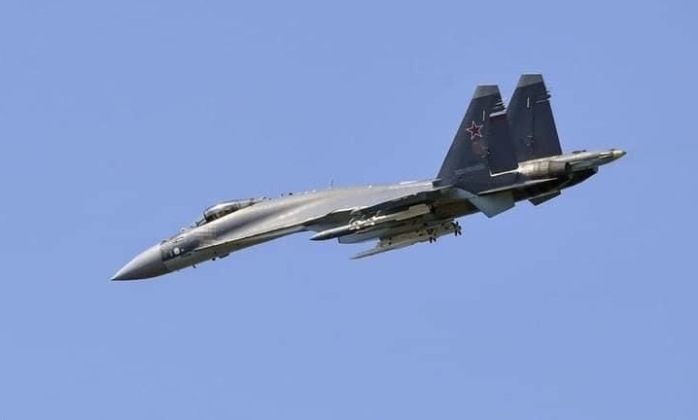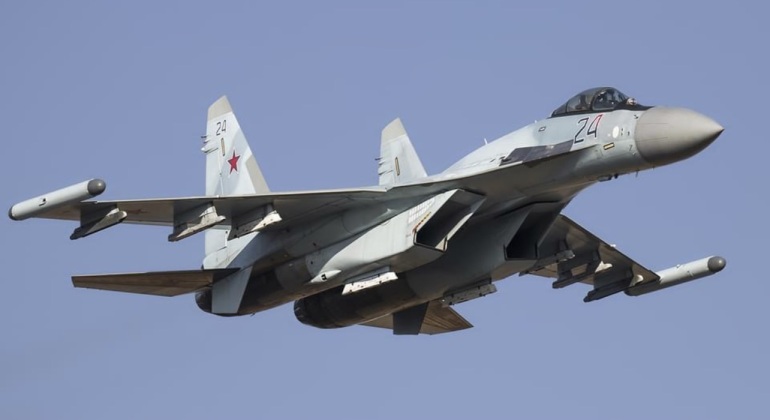News
Su-35 Shows Air Defence Suppression Prowess with Destruction of Ukrainian Radar Station: Drones Take Out Nearby Ground Forces
On December 12 the Russian Defence Ministry reported that a Su-35 fighter had been deployed to destroy a Ukrainian radar station near the hotly contested Kupyansk region, after the fighter detected the target using onboard sensors. The kind of radar installation was not confirmed. “While on a mission to patrol the airspace in the special military operation zone, the pilot detected enemy radar emission in the Kupyansk area. Radar emission from the target disappeared as he launched a guided missile from his aircraft,” it reported. Reconnaissance subsequently confirmed the target’s destruction. The Russian Air Force notably redeployed Su-35s from its Far Eastern regions to bases in Belarus across Ukraine’s northern border in the weeks preceding the escalation of hostilities between Kiev and Moscow, with the fighters having played important roles in the air campaign since then. As Russia’s most capable fighter fielded at squadron level strength in terms of its anti aircraft capabilities, dozens of kills over Ukrainian skies including against all the country’s top fighter classes have given the Su-35 more air to air combat victories than any other post Cold War fighter class in the world. Ten days of intense air battles in October saw the fighters credited with over half a dozen kills, and according to some sources many more, against Ukraine’s newly acquired MiG-29 fighters.

The Russian Air Force has continued to expand its Su-35 fleet with acquisitions at a rate of around 16 fighters per year, with the aircraft forming their first aggressor training unit in September 2022 likely to facilitate the imparting experience gained in air to air combat over Ukraine. The fighter’s elite status in the Russian fleet was recently reflected by its high profile deployment from December 6 to escort President Vladimir Putin on a visit to Abu Dhabi and Riyadh. Although the Su-35 is well optimised for air superiority missions, the fighter was designed to ensure a very high performance in air to ground and anti shipping missions, and has been deployed for suppression of Ukrainian air defences accordingly. The Kh-31 anti radiation mission has been a primary armament used by the fighters for such operations, with such missiles designed to home in on air defence systems’ radar emissions while having flight performance characteristics which optimise them to evade being shot down when en route to target.
The Su-35’s formidable ability to conduct electronic attacks has made it highly capable in air defence suppression roles, with use of electronic warfare pods such as the Khibny-M supplemented not only by the formidable electronic warfare capabilities of the fighter’s primary radar the Irbis-E, but also by two L-band AESA radars (operating in the 1.0 Ghz to 2.0 Ghz region of the radio spectrum) in its wing roots. This unique combination of sensors provides further options for electronic attacks on enemy assets. The Irbis-E’s electronic warfare capabilities are nevertheless considered less advanced than those of top end Chinese and American fighters such as the J-20’s Type 1475 (KLJ-5) and the F-35’s APG-81. The Russian Air Force has also suffered for its lack of advanced air defence suppression aircraft comparable to the U.S. Navy’s E/A-18G Growler, Chinese J-16D, or the Soviet MiG-25BM. Although a specialised electronic warfare variant of the Su-34M strike fighter reportedly set to enter service in the near future, reports indicate it will have less extensive modifications to the basic design compared to its Chinese and American counterparts.

A day before the Russian Defence Ministry reported the Su-35’s successful air defence suppression operation, it was reported on December 11 that FPV drone crews of Battlegroup West in Ukraine were successful in destroying Ukrainian Army positions nearby in Kupyansk. “Battlegroup West reconnaissance received data about the buildup of enemy forces in the Kupyansk area. Combat drone crews together with reconnoiters made a concealed forced march from the rear area closer to the frontline to complete a combat mission,” the ministry said. “Having arrived at the place, the kamikaze drone team destroyed a mortar crew of Ukrainian army fighters by a focused attack,” the ministry informed state media outlet TASS. The drones appear to have proven highly capable, with a single drone managing to destroy both a temporary stationing area of a Ukrainian unit and a weapons depot. Russian drone capabilities have advanced very considerably since the beginning of escalated hostilities with Ukraine in February 2022, both through major acquisitions from Iran and through significant advances in the domestic industry, with newer more advanced variants of the Lancet drone in particular having been operationalised in the war zone at frequent intervals.












